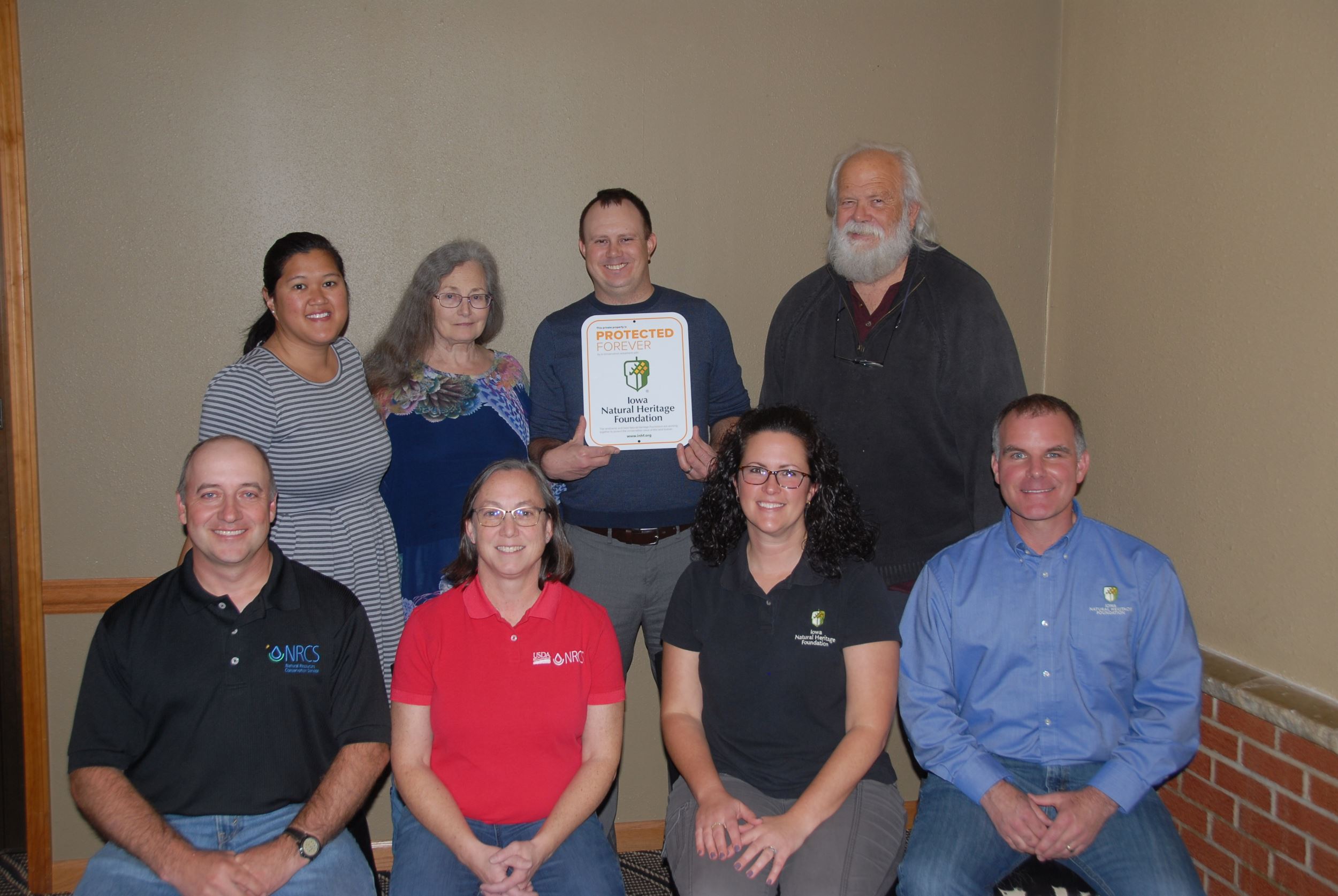For the Birds
By Larry Stone on March 31, 2022 in Blog

By Larry Stone, special to INHF, lstone@alpinecom.net
Phil Specht’s philosphy when it comes to managing his Clayton County farm overlooking the Bloody Run Creek valley in northeast Iowa is to keep grass on the ground and keep his cattle moving.
%20flycatcher.jpg)
“And the birds will come,” Specht might add. And the wildflowers, insects, amphibians, reptiles and other wildlife that have become his “pasture buddies” over the years.
Specht and his wife, Sharon, and their son, Jon, recently partnered with Iowa Natural Heritage Foundation (INHF) and the Natural Resources Conservation Service (NRCS) to permanently protect 244 acres of land – and its diverse inhabitants – with an agricultural land easement.
Formerly the Farm and Ranch Lands Protection Program (FRPP), the Agricultural Conservation Easement Program permanently protects agricultural lands, particularly those that implement conservation practices and elements of sustainability. NRCS provides both partial funding and oversight of this USDA program, which pays the landowner to “protect croplands and grasslands on working farms and ranches by limiting non-agricultural uses.”
“The Specht family has long employed conservation practices on their farm that attract and support a variety of native and migratory species,” said INHF Conservation Easement Director Erin Van Waus. “These practices, along with the land’s location within a National Audubon Society Globally Important Bird Area and the Effigy Mounds-Yellow River Forest Bird Conservation Area, made it an excellent candidate for the program.”

In 2020, Phil sold approximately 20 acres of what he calls his “Grassland Bird Sanctuary” to the Iowa Department of Natural Resources (DNR) to create a walk-in public access to the neighboring Bloody Run Wildlife Management Area (WMA).
In addition to expanding access to the WMA, from this strip of public land, hikers may observe Bobolinks, Meadowlarks and other grassland birds, as well as diverse prairie wildflowers, Monarch butterflies, and Rusty patched bumble bees on the Spechts’ adjacent private land.
The start of all these efforts can be traced back to a love of the land that spans generations, an enthusiasm for innovation and a desire to better understand the interconnectedness that exists in this corner of Clayton County.
Ever-expanding understanding
Until 2020, Specht maintained a grass-fed Holstein dairy herd. The intensive management that kind of grazing requires – Phil moved his cows among 51 grass paddocks every three or four days – led him to understand the diversity and complexity of his farm. He learned, for example, that Bobolinks thrived with his grazing regime.
He credits his late brother, Dan, who managed a grass-fed beef herd, with first making that connection. “If you’ve got Bobolinks, you’ve got a working grassland ecosystem,” Dan liked to say.

The brothers enlisted personal friend and prairie ecologist Mary Damm to study the amount and diversity of grassland cover that Bobolinks most favor. Wildlife researcher Jon Stravers and biologist Paul Skrade also worked on the project. During their research, Stravers and Skrade discovered thriving populations of Cerulean Warblers in mature trees on Phil’s farm. This finding led Phil to cancel the sale of the trees he’d intended to cut, resulting in thousands of dollars of lost income.
Phil’s passion for conservation is matched only by his interest in innovation. Although he built a large dairy operation, his approach was always unconventional. Early on he experimented with managed grazing, different feed rations and bought hay from neighbors to increase the acres under the protection of long rotations. Phil transitioned to grazing his Holsteins on pasture following Dan’s success with raising his beef herd on grass.
“The keys to grazing are how much to take, how much to leave, and how much to let rest,” he said.
That approach – along with Phil’s attention to good genetics in his animals – led to him having the top producing dairy cow in Iowa in three different years.
The Specht brothers’ approach also led to a research project with the Leopold Center for Sustainable Agriculture at Iowa State University to measure the prevalence of beneficial insects in pastures. Phil has also conducted his own studies of the effects of grazing and mowing on habitat and soil fertility, and is continually seeking fellow scientists interested in conducting research on his property.
Protection and perspective
A leg injury and subsequent surgery forced Phil to reduce the size of his dairy herd in 2020. Shortly after, he learned that more cattle can actually increase the quality of grassland bird habitat as Bobolinks prefer to nest in grazed areas.
.jpg)
After years of observing interactions like these between livestock and wildlife, Phil became convinced that cattle on the land should be part of his conservation easement. Grazing tops the list of permitted uses spelled out in the conservation easement, while tillage and row-cropping are expressly prohibited.
“Since I will never regain full mobility, I will be looking for cattle owners that will assume some of the management day-to-day as they rent the grass in future years,” Phil said. “I need more animals to make the desired habitat.”
The goal of the Specht family’s conservation easement – protecting and creating habitat – will require managing interconnected biological communities, Phil said. And the human element is critical to that working lands partnership.
Phil likes to quote an old proverb: “The best fertilizer is the footsteps of the farmer.”